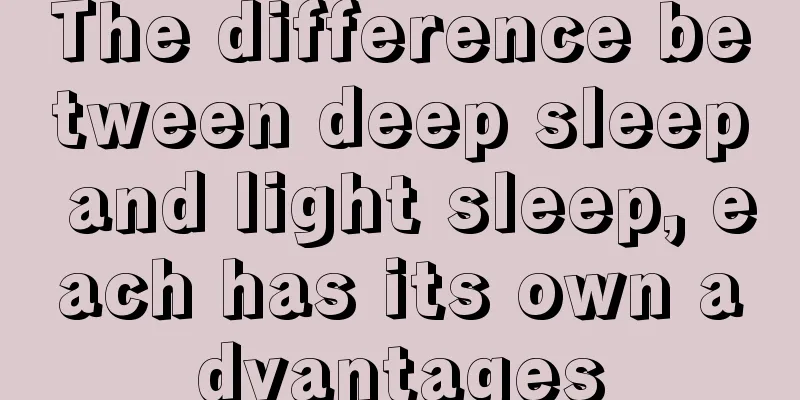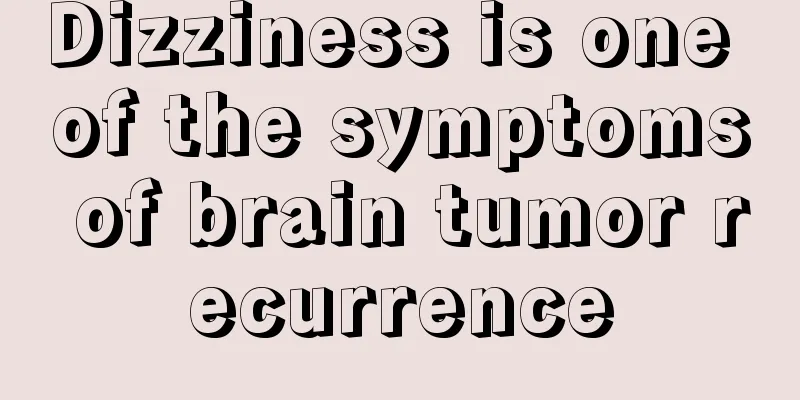The difference between deep sleep and light sleep, each has its own advantages

|
I believe everyone is familiar with the definition of sleep. Sleep can provide our body with sufficient vitality and maintain our health. But how much do you know about the definition of deep sleep and light sleep? Let's distinguish between deep sleep and light sleep. 1. Deep sleep (non-rapid eye movement sleep) Human sleep has a rhythm, alternating between deep and light sleep. Japanese researchers have recently discovered that without a shallow period of rapid eye movement sleep, the brain waves that appear during deep non-rapid eye movement sleep and can promote learning and memory abilities will be weakened. Non-rapid eye movement sleep is a deep sleep state that helps promote growth and restore physical strength. It is generally considered to be the key to determining the quality of a person's sleep. Stage 1 - occurs at the beginning of sleep and is characterized by slow eye movements. People in this stage still consider themselves conscious. Stage 2 - People at this stage have entered unconsciousness, but can easily wake up. The eyeballs no longer move, and dreaming rarely occurs at this time. In the EEG records of this period, faster brain waves occasionally appear, which are called "sleep spindles" and "K complex waves". Phase III - The transition period between Phase II and Phase IV. Delta waves begin to appear. Stage 4 - Slow wave sleep refers to deep sleep. Dreaming occurs significantly more during this period than during other non-REM sleep periods, but is still much less than during REM sleep. On the EEG, the dream waves during this period are less coherent and obvious than those during REM sleep. Parasomnias also often occur during this period. 2. Light sleep (rapid eye movement sleep) In the 1950s, a scientist was observing the EEG changes in children during sleep and found that there was a period of time during sleep when the EEG activity was very special. It did not look like a sleep EEG, but rather like being in a waking state. During this period, the frequency of brain waves becomes faster and the amplitude becomes lower. At the same time, the heart rate and blood pressure increase, and the muscles relax. The strangest thing is that the eyeballs keep moving from side to side. For this reason, scientists call this stage of sleep rapid eye movement sleep (REM sleep). ① Rapid horizontal movement of the eyeball due to paroxysmal twitching of the extraocular muscles. Side-to-side movement of the eyeball can be seen with the eyelids closed. But the man had fallen into a deep sleep. ②The muscles of the whole body relax, especially the tension of the muscles that maintain posture decreases. ③ Increased cerebral blood flow and metabolism cause increased heart rate, rapid and irregular breathing, a slight increase in blood pressure, and increased body temperature. ④The brain wave condition is similar to that when awake, showing low-voltage fast waves. ⑤80% of people who wake up from REM sleep think they are dreaming. Because clear dreams will appear at this time. |
<<: Teach you how to have a deep sleep and say goodbye to insomnia
>>: Can people with high blood pressure eat ginkgo nuts? Please note
Recommend
Can I take ceftriaxone after drinking alcohol? This is the consequence!
Cephalosporin is a common anti-inflammatory drug ...
The efficacy and function of sea buckthorn detoxification
People must pay attention to detoxification in th...
Can a ruptured cerebral blood vessel be cured?
Most people don't pay much attention to cereb...
Is it okay to eat melon seeds every day
Melon seeds are a kind of snack for leisure and e...
My thumb hurts when I write
If the hand muscles do not get rest when writing ...
The cure rate of colorectal cancer patients
The cure rate of colorectal cancer depends on the...
Can a routine blood test detect a tumor?
A routine blood test is a basic examination. It i...
Can eating fried rice help you lose weight
Fried rice originated from Mongolia and is the st...
What are the quick ways to get rid of acne
Basically everyone has experienced fighting acne,...
Can taking a walk after a meal lower blood sugar? The effect will be obvious if you stick to it
Walking a hundred steps after a meal can help you...
What is lumbar third transverse process syndrome? What is the syndrome?
Lumbar third transverse process syndrome is a lum...
Gallbladder cancer metastasis pathway
Gallbladder cancer can spread in many ways, inclu...
Things to note when doing yoga to reduce waist and abdomen
As we all know, yoga has many benefits. It can in...
How to treat severe gastroenteritis?
Summer is here, and that means certain illnesses ...
What to do if the water from the buttocks has a strange smell
If the discharge from the buttocks has an odor, y...









